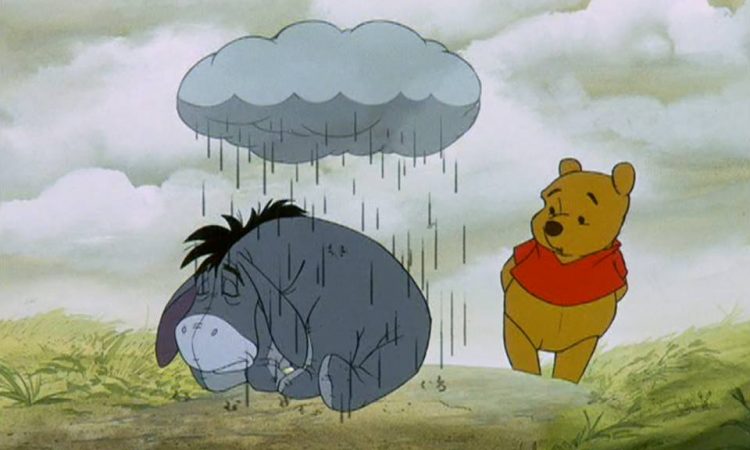__ (or more) symptoms have to be present during the same 2-week period.
5 (five)
What is the age of onset for major depressive disorder?
Puberty (however, peaks in the mid-20s )
Commonly used medication for treatment
1. Lexapro
2. Prozac
Major Depressive Disorder is commonly known as
Clinically Depressed
A positive diagnosis must include these two symptoms:
(1) depressed mood
(2) loss of interest or pleasure
What is the difference between major depressive disorder and depression?
major depressive disorder persists practically every day for at least two weeks and involves other symptoms than just sadness alone
What are the three most commonly used psychotherapy treatments for major depressive disorder?
• Cognitive behavioral therapy (CBT)
• Interpersonal therapy (IPT) "here & now"
• Mindfulness-based cognitive therapy (MBCT)
What cartoon character from Winnie the Pooh had many friends around him but still seemed to feel alone?

In children & adolescents depressed mood can also appear as
irritable mood
What are the two most common disorders that many individuals with a major depressive disorder are misdiagnosed with?
Bipolar Disorder I & II
Which cartoon character from Spongebob had recurring feelings of worthlessness, hopelessness, thoughts of suicide, and loss of interest in work and interacting with others?
The "mood" in a major depressive episode is often described by the INDIVIDUAL as ______, _____, ______, _______, or " _____".
1. depressed
2. sad
3. hopeless
4. discouraged
5. "down in the dumps"
People with clinical depression often have other mental health conditions, such as:
1. substance use
2. panic disorder
3. social anxiety disorder
What are the 9 symptoms of Major Depressive Disorder?
1. depressed mood
2. insomnia or hypersomnia nearly every day
3. lack of interest or diminished pleasure in all activities most of the day
4. feelings of worthlessness
5. fatigue nearly every day
6. lack of concentration or indecisiveness, nearly every day
7. significant weight loss when not dieting or weight gain ( more than 5% of body weight in a month)
8. psychomotor agitation nearly every day (observable by others)
9. recurrent thoughts of death (not just fear of dying), recurrent suicidal ideation without a specific plan, or a suicide attempt or a specific plan for committing suicide